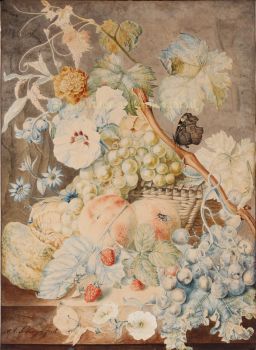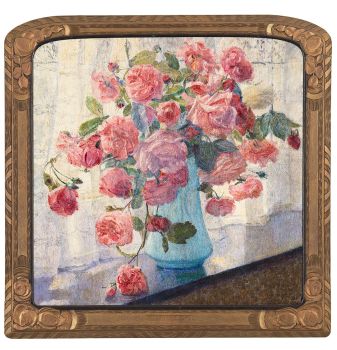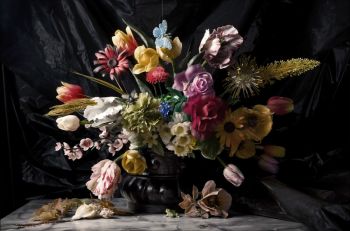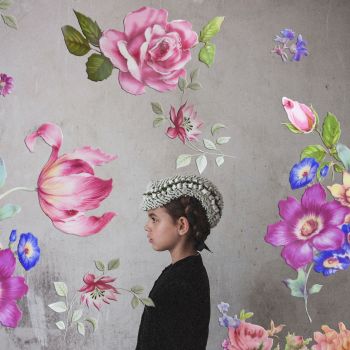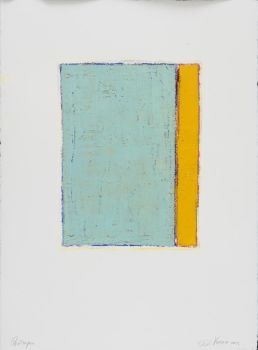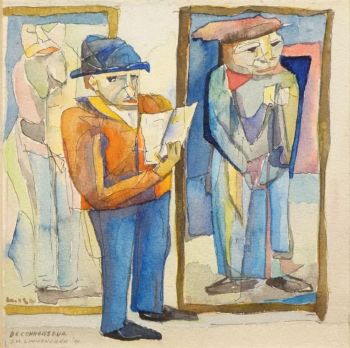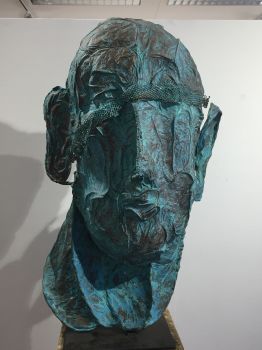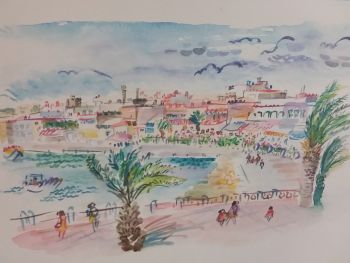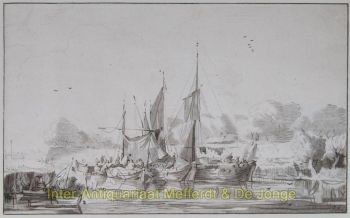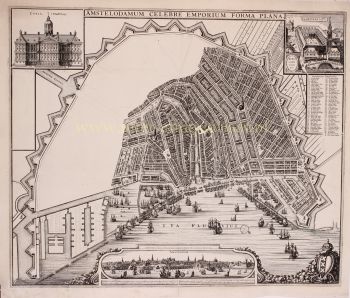Rose 1799
Gerard van Spaendonck
Papel
50 ⨯ 33 cm
€ 1.250
Inter-Antiquariaat Mefferdt & De Jonge
- Sobre arteRose a cent feuilles [rose with one hundred petalls) or cabbage rose, stippel engraving made by P.F. le Grand after a drawing by Gerard(us) van Spaendonck from the Fleurs dessinées d'après nature, published between 1799 and 1801. With original hand colouring. Size. (print) approx. 50 x 33 cm. The Centifolia roses date from around 1550. Although once regarded as forms of a species, they are now thought most likely to be hybrids between the autumn damask and an alba rose. Centifolias are usually compact bushes with heavy double flowers which often droop under there own weight. The colours varied from white to deep rose red plus striped and spotted varieties. They were much featured in the paintings of the Dutch masters and came to be known as "The rose of the painters". It has fragrant, mid pink, double flowers, the buds of which are covered in fine tubercles or filaments known as moss. Mosses are natural mutations which first occurred on Damask and Centifolia roses. They were very fashionable in the early eighteenth and nineteenth centuries when several hundred forms were raised. Gerard van Spaendonck (1756-1842) studied with decorative painter Willem Jacob Herreyns in Antwerp. In 1769 he moved to Paris, where in 1774 he was appointed miniature painter in the court of Louis XVI. In 1780 he succeeded Madeleine Françoise Basseporte as professor of floral painting at the Jardin des Plantes, and was elected a member of the Académie des beaux-arts shortly afterwards. Van Spaendonck contributed to over fifty works of Les Vélins du Roi, a famous collection of botanical watercolours owned by French royalty. From 1799 to 1801 he published twenty-four plates as part of his Fleurs Dessinees d'apres Nature (Flowers Drawn from Life), which were high-quality engravings for students of floral painting. Today the Fleurs Dessinees d'apres Nature are considered among the best botanical engravings in the world. Stipple engravings with which one is able to differentiate between different tones of gray, turned out to be highly suitable for depicting botanical details, a method that Van Spaendonck also taught his pupil Pierre-Joseph Redouté. Like other famous flower painters, Van Spaendonck was also technically perfect: in oil, watercolour, pen or pencil, on any scale. With attention to every minute detail and elegance and sophistication of the composition, he shows his mastery. Like Jan van Huysum, Van Spaendonck understood the zeitgeist and created flower compositions that matched the taste of the public of around 1800. He combined the traditional Dutch way of representing flowers with French sophistication and good taste. Price: Euro 1.250,-
- Sobre artista
Gerard era um irmão mais velho de Cornelis van Spaendonck (1756-1840), que também era um pintor conhecido. Nos anos 1760-1769 estudou em Antuérpia com o pintor decorativo Willem Herreyns. Em 1769 mudou-se para Paris e, em 1774, por mediação de Claude-Henri Watelet, aos 28 anos, foi nomeado pintor de miniaturas na corte de Luís XVI. Expôs pela primeira vez em 1777. Em 1780 sucedeu a Françoise Basseporte (1701-1780) como professor de pintura de flores no Jardin des Plantes. Pouco depois foi eleito membro da Académie des beaux-arts.
Van Spaendonck pintou em óleo e aquarela. Ele fez mais de cinquenta obras para o Vélins du Roi, uma renomada coleção de aquarelas botânicas de propriedade da família real francesa. De 1799 a 1801 publicou 24 pranchas de suas Fleurs Dessinées d'après Nature (Flores desenhadas da vida); gravuras de alta qualidade para estudantes de pintura de flores. Hoje, Fleurs dessinées d'après nature é um livro altamente considerado no campo da pintura de flores.
Em 1788, Van Spaendonck foi nomeado conselheiro da Académie e, em 1795, foi um dos fundadores do Institut de France. Em 1804 ele foi premiado com a Legião de Honra. Pouco depois, ele foi enobrecido por Napoleão Bonaparte. Van Spaendonck morreu em 1822 aos 76 anos.
Na Groeseindstraat 99 em Tilburg, uma placa pode ser vista onde costumava ser o local de nascimento dos irmãos Van Spaendonck. Além do pintor Karel Appel, Gerard van Spaendonck é o único holandês a ser enterrado no Père Lachaise, em Paris. Gerard está logo atrás do túmulo de Chopin.
Você está interessado em comprar esta obra de arte?
Artwork details
Related artworks
- 1 - 1 / 1
- 1 - 4 / 24
- 1 - 4 / 24
- 1 - 4 / 24
- 1 - 4 / 12







